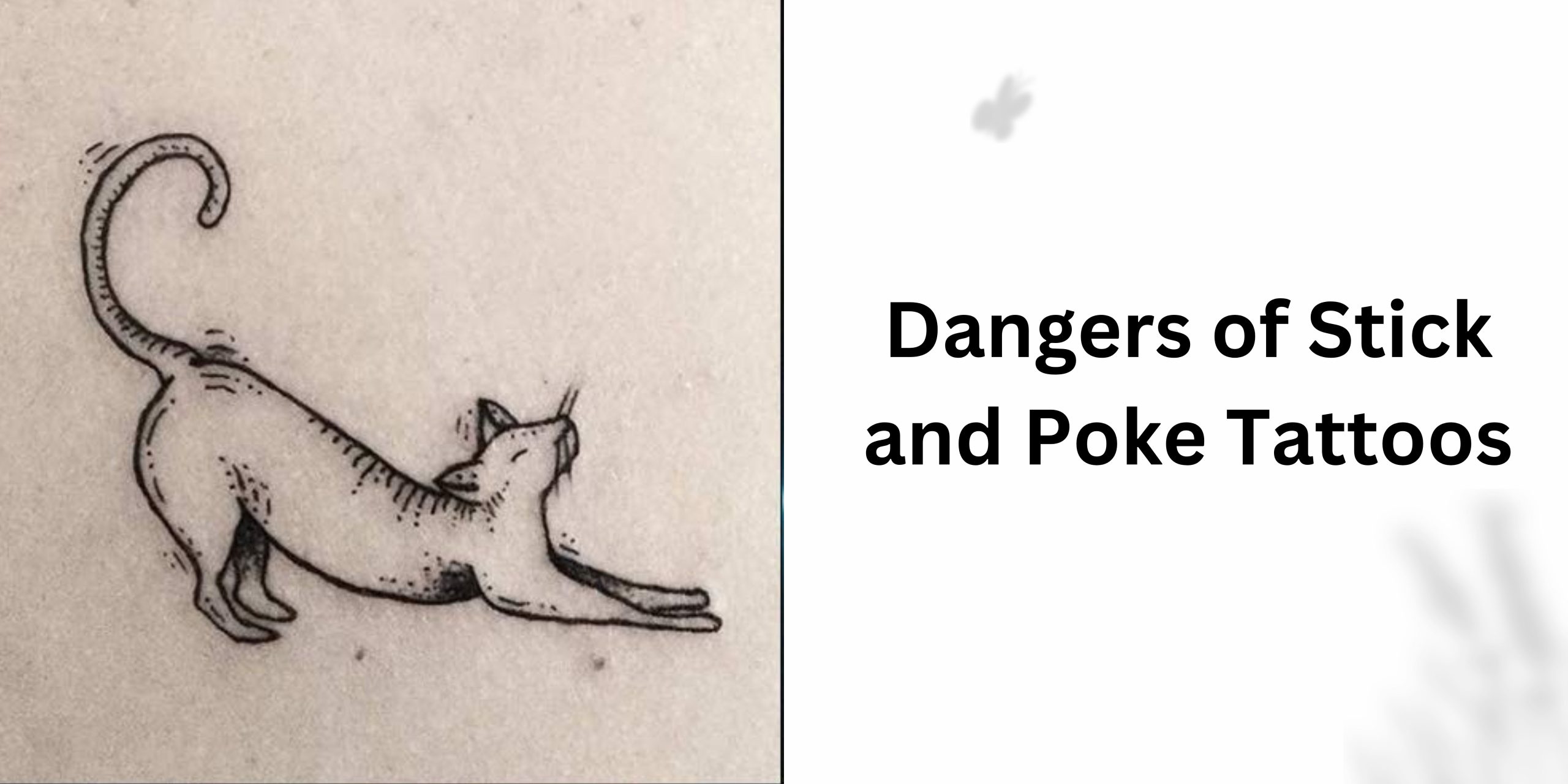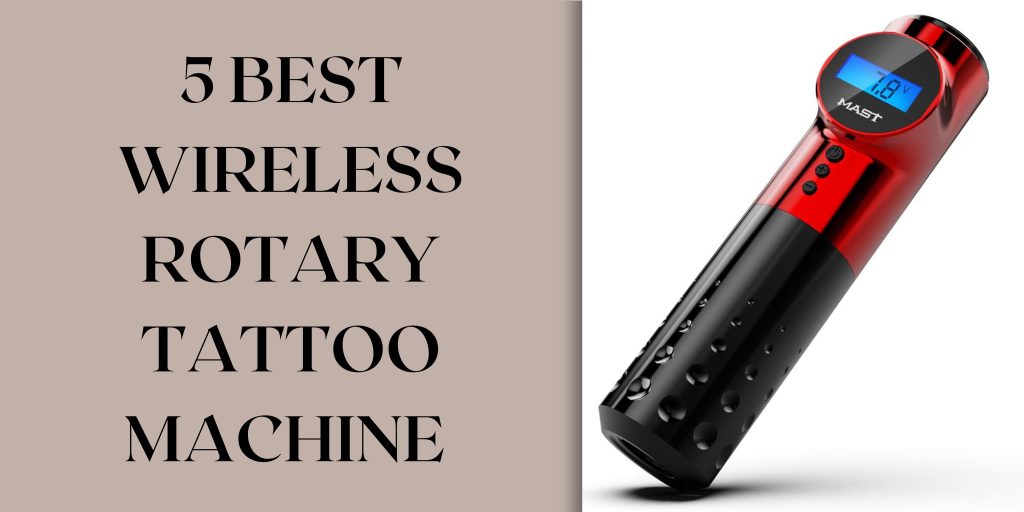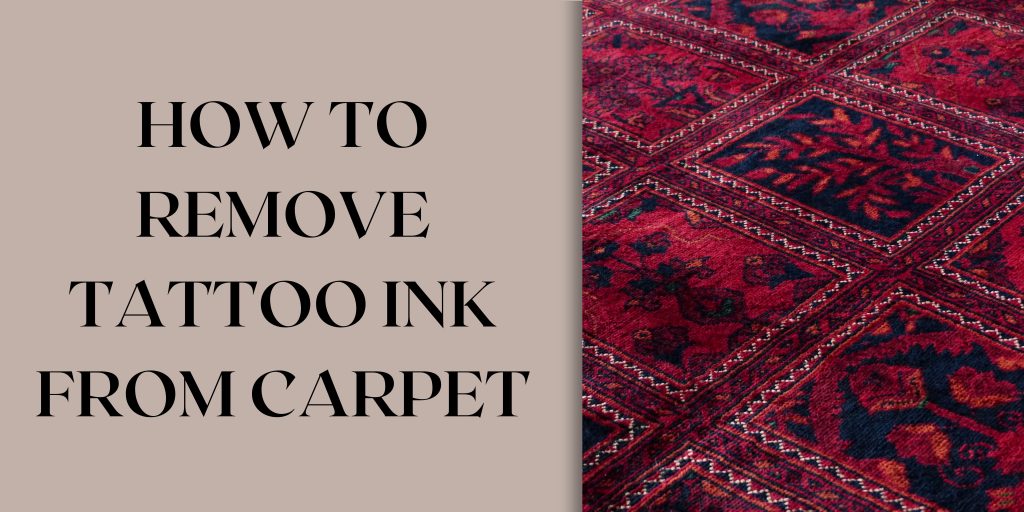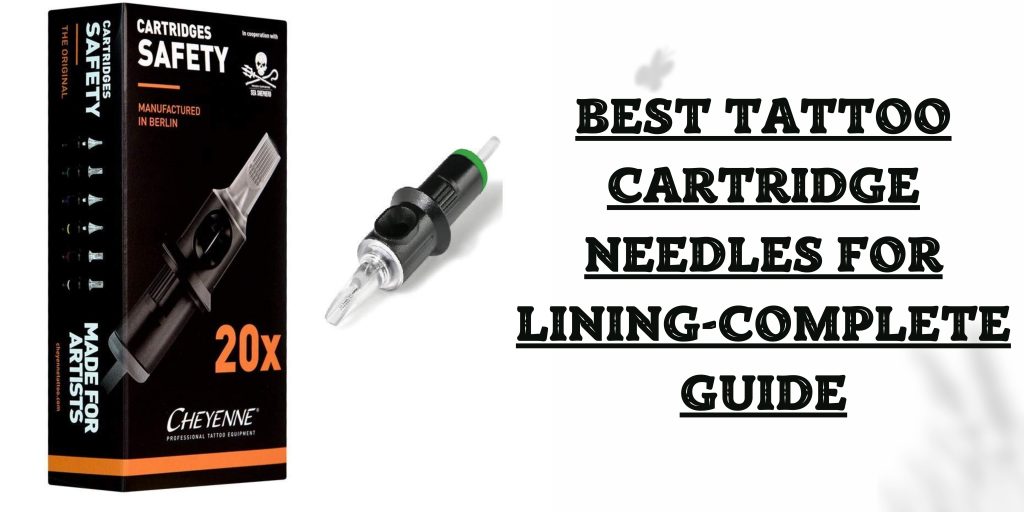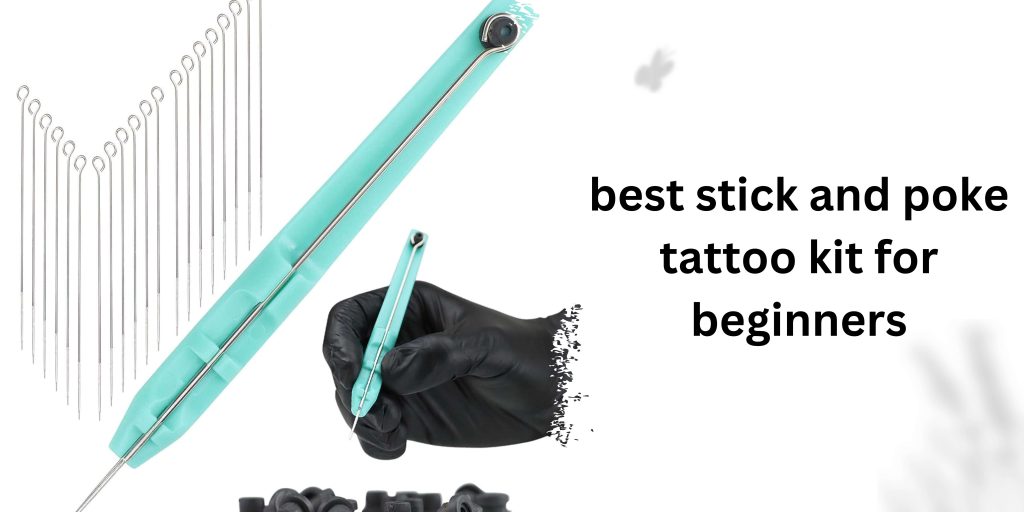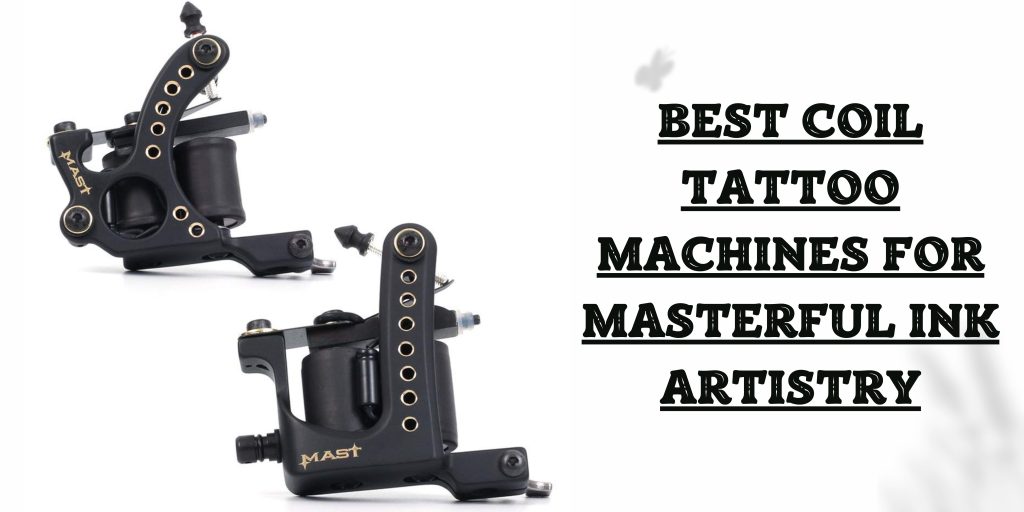In recent years, stick and poke tattoos have gained significant popularity, becoming a trend that appeals to the DIY spirit and the desire for unique, indie-style body art. While the allure of creating your own tattoo and embracing a more traditional approach to ink may be appealing, it’s important to understand the potential dangers that come with this trend. In this article, we will delve into the world of dangers of stick and poke tattoos, exploring their risks, health concerns, and the importance of informed decision-making.
What are Stick and Poke Tattoos?
Stick and poke tattoos, also known as DIY tattoos or hand-poked tattoos, are created by manually inserting ink into the skin using a needle and pigment. This method is a departure from the modern tattoo machine that rapidly injects ink into the skin. The appeal of stick and poke tattoos lies in their connection to ancient tattoo practices, offering a sense of individuality and a departure from conventional tattooing methods.
The Allure of Stick and Poke Tattoos
Stick and poke tattoos have captured the imagination of individuals seeking a personal and unique way to express themselves. The trend taps into the nostalgia associated with ancient tattoo techniques and aligns with the aesthetic sensibilities popularized on social media platforms. The allure of stick and poke tattoos is the opportunity to adorn one’s body with an indie-style, handcrafted design that stands out in a world of mass-produced tattoos.
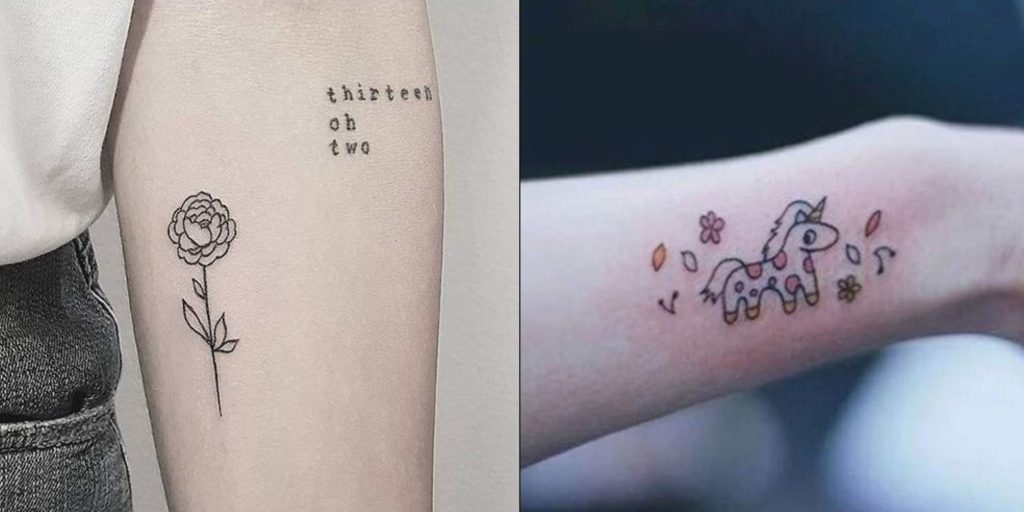
Potential Dangers and Health Risks
As appealing as stick and poke tattoos might be, there are significant risks associated with this DIY approach to body art. It’s important to understand these risks before deciding to embark on the stick and poke journey.
Lack of Professional Training and Expertise
One of the primary dangers of stick and poke tattoos is the absence of proper training and expertise. Professional tattoo artists undergo extensive training to ensure that they understand the anatomy of the skin, proper sterilization techniques, and safe needle insertion depth. Without this knowledge, individuals attempting to stick and poke tattoos may inadvertently cause injury, infection, or other complications.
Risk of Infection and Unsterile Equipment
Sterilization is a critical aspect of tattooing. Stick and poke tattoos carried out without proper sterilization techniques can introduce harmful bacteria into the skin, leading to painful infections. Even minor infections can escalate into serious health issues if left untreated. It’s crucial to use sterile needles, inks, and other equipment to minimize the risk of infection.
Allergic Reactions to Inks and Pigments
Tattoo inks and pigments can contain various substances that some individuals may be allergic to. Without proper knowledge of ink composition, there’s a risk of allergic reactions that can manifest as redness, itching, or even more severe symptoms. Patch testing before committing to a full tattoo is recommended to identify any potential sensitivities.
Importance of Proper Technique and Sanitation
To mitigate the risks associated with stick and poke tattoos, it’s essential to prioritize proper technique and sanitation throughout the tattooing process.
Significance of Using Sterile Needles and Equipment
Sterile needles and equipment are non-negotiable when it comes to safe stick and poke tattooing. Reusing needles or using non-sterile tools can lead to infections and other complications. It’s crucial to invest in high-quality, single-use needles and to sterilize other equipment properly before each session.
Maintaining a Clean Workspace and Personal Hygiene
Creating a clean and sterile workspace is paramount. Disinfecting the area where the tattoo will be done, as well as your hands and the recipient’s skin, helps minimize the risk of infection. A hygienic environment can prevent the introduction of harmful bacteria and ensure a safer tattooing experience.
How Improper Techniques Can Lead to Scarring and Uneven Results
An inadequate technique during stick and poke tattooing can result in uneven lines, patchy colouring, and scarring. Uneven pressure while inserting the needle can cause the ink to be deposited at varying depths, leading to a less-than-desirable appearance. Additionally, aggressive or unsteady hand movements can cause unnecessary trauma to the skin, resulting in scarring.
Infection Risks and Bloodborne Pathogens
Infections are a significant concern when it comes to stick and poke tattoos, primarily due to the potential for bloodborne pathogens to enter the body.
Explanation of Potential Infections
Stick and poke tattoos create micro-wounds in the skin, making them susceptible to infections caused by bacteria and other microorganisms. Common infections include cellulitis, staph infections, and fungal infections. These infections can lead to redness, swelling, pain, and even more severe health complications if not addressed promptly.
Bloodborne Diseases Such as HIV and Hepatitis
The risk of bloodborne diseases is not to be taken lightly. Contaminated needles or inadequate sanitation practices can result in the transmission of bloodborne diseases such as HIV and hepatitis. These diseases can have serious, long-term health consequences and should serve as a stark reminder of the importance of using sterile equipment and following proper sanitation protocols.
Steps to Prevent Infections and Ensure Safety
Preventing infections starts with education and a commitment to safety. Prioritize the following steps to minimize infection risks:
- Use sterile, single-use needles and equipment.
- Cleanse the tattooing area with antiseptics.
- Wear disposable gloves and change them if they come into contact with non-sterile surfaces.
- Properly dispose of used needles and contaminated materials.
Allergic Reactions and Skin Sensitivities
Allergic reactions are a genuine concern when it comes to any form of body art, including stick and poke tattoos.
Different Types of Reactions to Tattoo Inks
Tattoo inks can contain a variety of ingredients, some of which individuals might be allergic to. Reactions can range from mild irritation to more severe symptoms, such as swelling, hives, or blisters. Some reactions might not appear immediately and could develop days or even weeks after getting the tattoo.
Common Symptoms of Allergic Responses
Common symptoms of allergic reactions to tattoo inks include:
- Itching or burning sensation at the tattoo site
- Redness and inflammation
- Raised bumps or welts
- Discharge or oozing from the tattoo
- Pain or discomfort
Importance of Patch Testing
Before committing to a full stick and poke tattoo, it’s advisable to conduct a patch test. A patch test involves applying a small amount of the chosen ink to a small area of skin and monitoring for any adverse reactions over the course of a few days. This test can help identify potential sensitivities and prevent larger complications.
Scarring and Skin Damage
Scarring is a concern with stick and poke tattoos, particularly when the tattooing process is not executed properly.
How Unprofessional Techniques Can Result in Scarring
Scarring can occur due to a variety of factors, including:
- Using excessive pressure during the tattooing process
- Inserting the needle at inconsistent depths
- Overworking the skin
- Not following proper aftercare procedures
Keloids and Hypertrophic Scars in Stick and Poke Tattoos
Certain individuals are more prone to developing keloids or hypertrophic scars, which are raised and thickened scars that extend beyond the original tattoo design. These types of scars can be particularly challenging to treat and can significantly alter the appearance of the tattoo.
Comparing Scarring Risks to Traditional Tattooing Methods
When compared to traditional tattooing methods performed by experienced professionals, the risk of scarring and skin damage tends to be higher with stick and poke tattoos. Traditional tattoo artists have the knowledge and expertise to minimize scarring risks through proper technique and aftercare guidance.
Fading and Unevenness Over Time
Stick and poke tattoos are more susceptible to fading and unevenness compared to tattoos done with modern tattoo machines.
Factors Contributing to Faster Fading
Several factors contribute to the faster fading of stick and poke tattoos:
- Shallower ink placement due to the manual nature of the process
- Lack of ink saturation in the skin’s deeper layers
- Exposure to the sun’s UV rays
Uneven Ink Distribution and Its Visual Impact
Ink distribution can be inconsistent during the stick and poke process, leading to uneven coloring and patchiness. Over time, these inconsistencies can become more pronounced, affecting the overall aesthetic of the tattoo.
Tips for Maintaining and Retouching Stick and Poke Tattoos
To extend the life of a stick and poke tattoo and mitigate the effects of fading:
- Apply sunscreen to protect the tattoo from UV rays.
- Moisturize regularly to keep the skin hydrated.
- Consider occasional touch-up sessions to maintain the tattoo’s vibrancy.
DIY vs. Professional Tattoos
The decision to get a stick and poke tattoo versus a professional tattoo is a critical one that carries implications for safety, quality, and longevity.
Benefits of Professional Tattoo Artists’ Experience and Expertise
Professional tattoo artists undergo comprehensive training and have a deep understanding of the skin, ink dynamics, and safe practices. Their experience allows them to create intricate designs with precision and minimal risk.
Hygiene, Safety, and Sterilization in Professional Settings
Professional tattoo studios adhere to strict hygiene protocols and sterilization standards. The equipment used is designed to prevent cross-contamination, and artists follow established guidelines to ensure a safe and clean environment.
Balancing Individuality with the Need for Skilled Execution
While the allure of personal expression through DIY tattoos is understandable, it’s essential to weigh this against the risks. Professional tattoo artists can work with clients to translate their ideas into well-executed, visually appealing tattoos while prioritizing safety and hygiene.
Legal and Age Restrictions
Before getting any tattoo, it’s crucial to understand the legal implications and age restrictions in your region.
Highlighting Legal Age Requirements for Tattoos
Most regions have specific age requirements for getting tattoos, often requiring individuals to be at least 18 years old. These laws are in place to protect minors from making hasty decisions they might later regret.
Potential Legal Consequences of Performing Stick and Poke Tattoos
Performing stick and poke tattoos without proper licenses or in a non-sterile environment can have legal repercussions. Individuals administering tattoos could face fines, legal actions, or even the closure of their operations.
Encouraging Informed Decisions and Responsible Choices
Ultimately, the decision to get a tattoo, whether professionally done or DIY, should be an informed one. It’s essential to research local laws, understand the risks, and make choices that prioritize both personal expression and safety.
Removing or Covering Stick and Poke Tattoos
Mistakes or changes in preferences may lead individuals to seek solutions for removing or covering up stick and poke tattoos.

Challenges of Removing Stick and Poke Tattoos
Removing stick and poke tattoos can be more complex than traditional tattoos due to the uneven distribution of ink and potential scarring. Tattoo removal processes, such as laser treatment, may not be as effective for these tattoos.
Exploring Cover-Up Options and Alternatives
Covering up a stick and poke tattoo with a new design can be an option, depending on the size and location of the tattoo. However, it’s important to consult with a professional tattoo artist who specializes in cover-ups to determine the feasibility of this approach.
Importance of Researching Tattoo Removal Experts
If removal is the preferred route, it’s crucial to research and consult with experienced tattoo removal specialists. Properly removing a tattoo while minimizing scarring and skin damage requires the expertise of professionals.
Stories of Tattoo Mishaps and Regrets
Real-life anecdotes can serve as cautionary tales for those considering stick and poke tattoos.
Sharing Real-Life Anecdotes
Learning from the experiences of others can be invaluable. Stories of tattoo mishaps, infections, scarring, and other complications can shed light on the potential risks and help readers make more informed decisions.
Lessons Learned from Others’ Experiences
Through these stories, readers can glean insights into the importance of proper technique, sanitation, and the need for expert guidance. Learning from others’ mistakes can empower individuals to prioritize safety over impulsivity.
Encouraging Readers to Think Critically
Reading about the challenges and regrets faced by others can prompt readers to think critically about their own choices. This reflection can lead to more cautious decision-making and a greater appreciation for the intricacies of tattoo artistry.
Navigating Social and Peer Pressure
The influence of peers, friends, and social media trends can impact decisions related to tattoos.
Influence of Friends, Peers, and Social Media Trends
Social pressure can play a significant role in the decision to get a tattoo, especially when friends or peers are also considering tattoos. Additionally, the portrayal of stick and poke tattoos on social media can create unrealistic expectations.
Encouraging Readers to Make Decisions for Themselves
Individuals should be encouraged to make choices that align with their personal values and preferences rather than succumbing to external influences. Tattoos are permanent, and the decision to get one should be driven by individual desires, not societal pressures.
Promoting Body Positivity and Self-Acceptance
Tattoos, whether stick and poke or professionally done, should enhance an individual’s sense of self. Encouraging body positivity and self-acceptance can help readers make decisions that align with their self-image and confidence.
Expert Opinions and Advice
Seeking guidance from professionals in the field is crucial when making decisions about tattoos.
Insights from Professional Tattoo Artists
Experienced tattoo artists can provide valuable insights into the risks associated with stick and poke tattoos. Their knowledge can shed light on the intricacies of tattooing, proper techniques, and the potential consequences of DIY tattooing.
Health Professionals’ Perspective
Medical professionals can offer a different perspective by highlighting the potential health hazards linked to stick and poke tattoos. Their insights can provide a well-rounded view of the risks involved and the importance of prioritizing safety.
Importance of Seeking Expert Advice
Before getting any tattoo, it’s advisable to seek advice from both tattoo artists and medical professionals. Their combined expertise can help individuals make informed decisions that prioritize their health and well-being.
Preparing for a Stick and Poke Tattoo
For those who still choose to proceed with stick and poke tattoos, thorough preparation is key.
Researching Reputable Suppliers for Equipment and Inks
Quality equipment and inks are essential for a safe and successful stick and poke tattoo. Research reputable suppliers are known for producing sterile and high-quality materials.
Gathering Necessary Materials for a Safe Process
Creating a checklist of necessary materials, including sterile needles, tattoo inks, gloves, and antiseptics, is vital for a safe tattooing process. Having everything ready before starting helps minimize the risk of cross-contamination.
Step-by-Step Guide to Preparing the Skin and Workspace
Preparing the skin involves thorough cleansing and disinfection. The workspace should be clean, organized, and free from potential contaminants. Following a step-by-step guide ensures a safer and more controlled tattooing experience.
Aftercare and Monitoring for Complications
Aftercare is critical to ensuring that the tattoo heals properly and minimizing the risk of complications.
Detailed Aftercare Routine for Stick and Poke Tattoos
A comprehensive aftercare routine involves:
- Cleaning the tattoo with mild, unscented soap and water
- Applying a thin layer of tattoo-specific ointment to keep the skin moisturized
- Avoiding picking, scratching, or exposing the tattoo to excessive moisture
Identifying Signs of Infections and Complications
Monitoring the tattoo for signs of infection or other complications is essential during the healing process. If redness, swelling, pus, or increasing pain is observed, seeking medical attention is crucial.
When to Seek Medical Attention
While most stick and poke tattoos heal without issue, it’s important to know when to seek medical help. If symptoms worsen, persist, or become severe, a medical professional should be consulted.
FAQs about Stick and Poke Tattoos
Conclusion
Stick and poke tattoos offer a unique and personal approach to body art, but they come with potential dangers and risks that should not be underestimated. Before embarking on the journey of stick and poke tattooing, individuals must fully understand the importance of proper technique, sanitation, and informed decision-making. While the allure of DIY tattoos may be strong, the long-term implications of safety and quality cannot be overlooked. By prioritizing health, safety, and expert guidance, individuals can make choices that align with their personal style while minimizing the risks associated with stick and poke tattoos.

